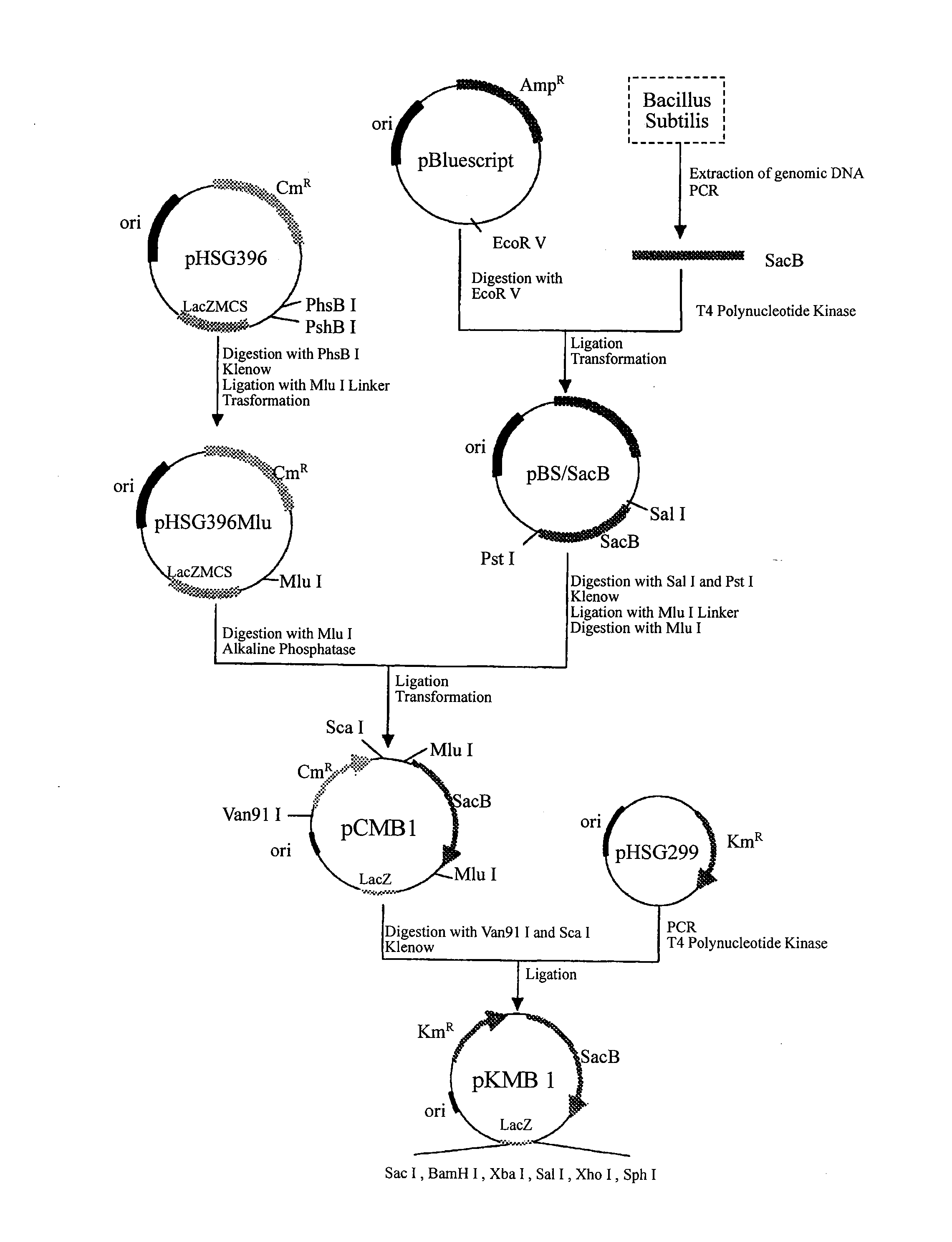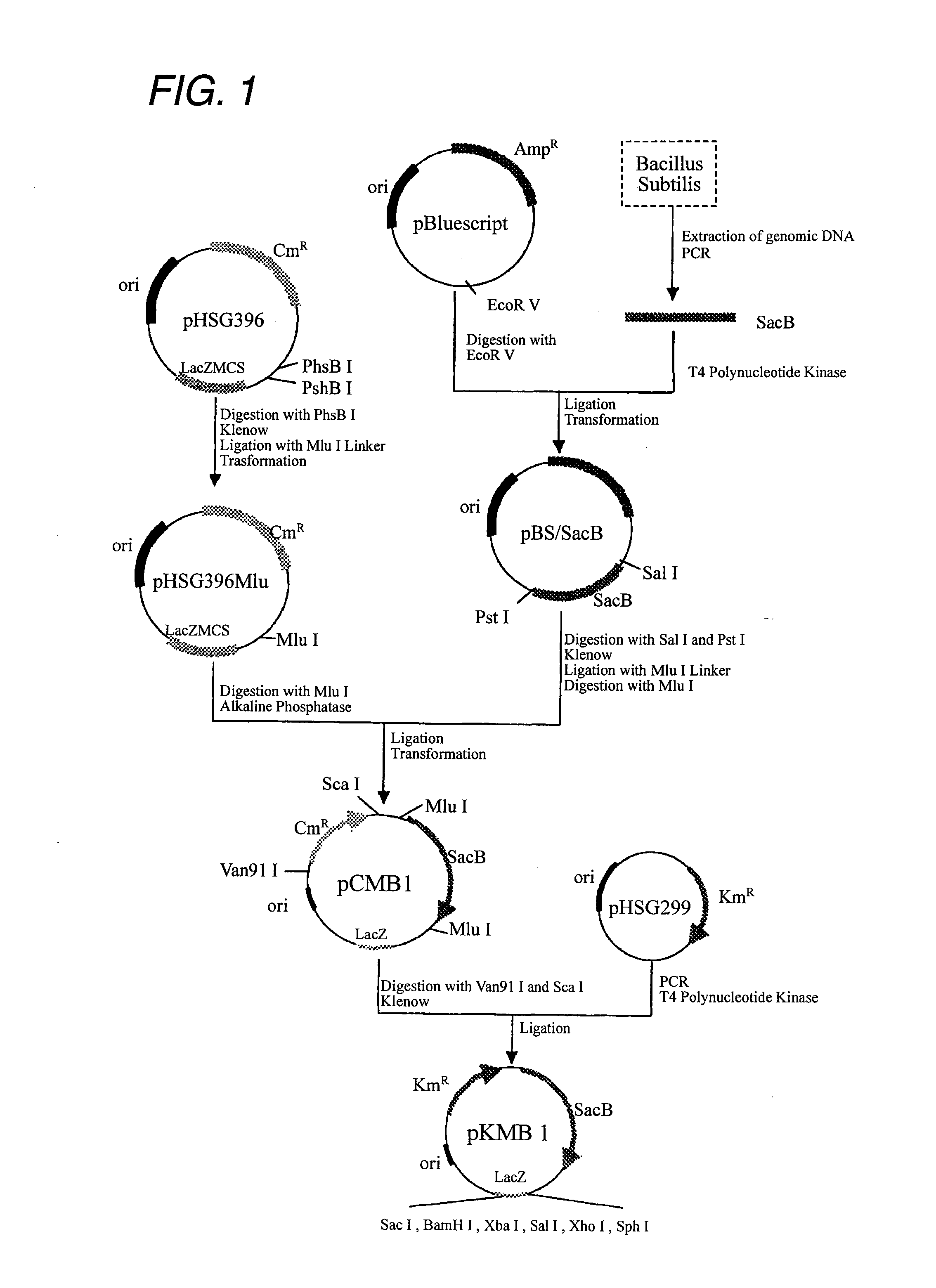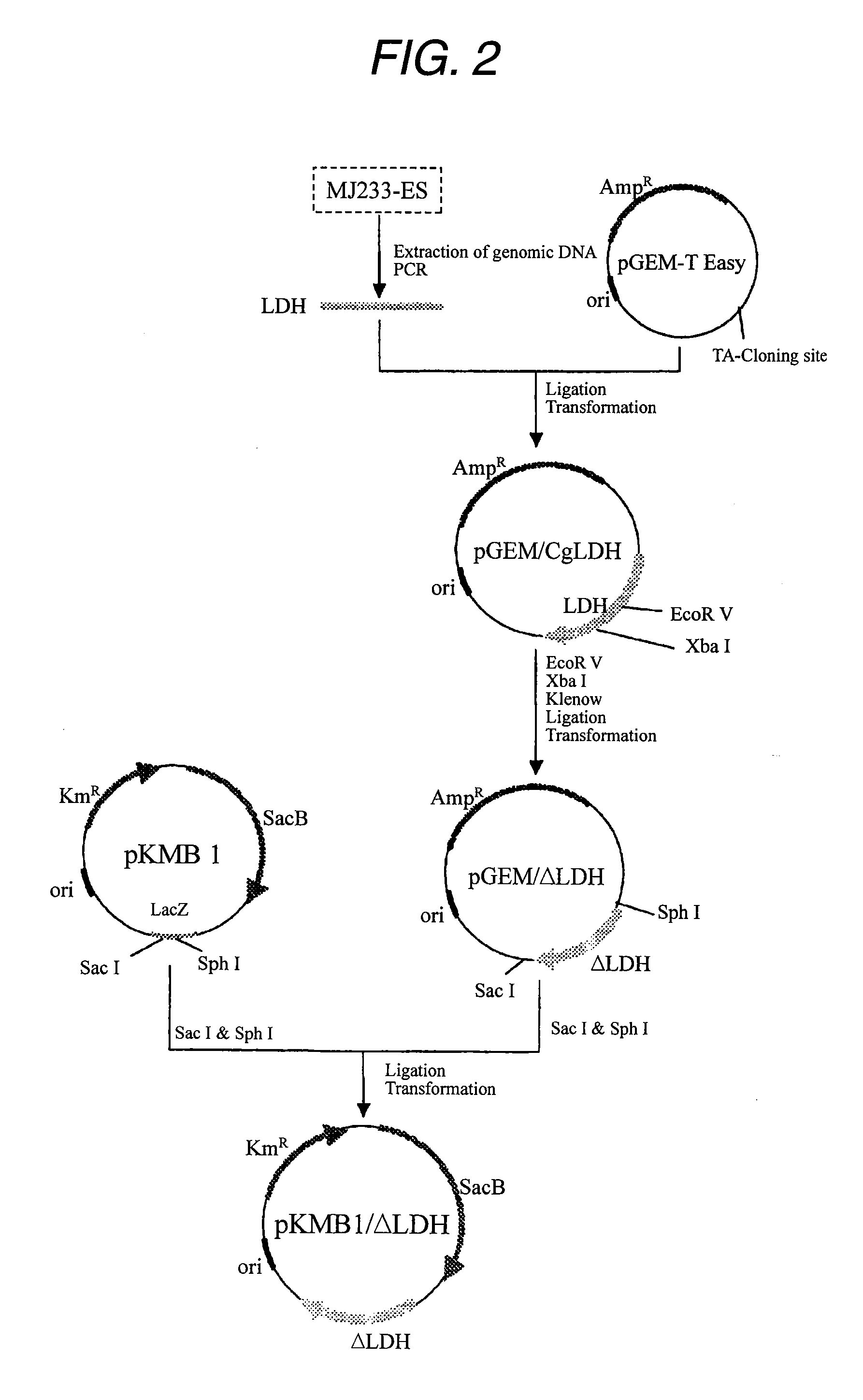Biomass-resource-derived polyester and production process thereof
a technology of biomass resources and polyester, applied in the direction of bio-packaging, sustainable manufacturing/processing, polishing compositions, etc., can solve the problems of affecting the production process, so as to reduce the deterioration of mechanical properties, and reduce the effect of physical properties
- Summary
- Abstract
- Description
- Claims
- Application Information
AI Technical Summary
Benefits of technology
Problems solved by technology
Method used
Image
Examples
referential example 1
Construction of Gene Disruption Vector
[0252](A) Extraction of Bacillus subtilis genomic DNA
[0253]Bacillus subtilis (ISW1214) was cultured in 10 mL of an LB medium [composition: obtained by dissolving 10 g of tryptone, 5 g of yeast extract and 5 g of NaCl in 1 L of distilled water] until a late logarithmic growth phase and bacterial cells thus grown were collected. The resulting bacterial cells were suspended in 0.15 mL of a solution containing a 10 mM NaCl / 20 mM Tris buffer (pH 8.0) / 1 mM EDTA.2Na solution containing lysozyme to give its concentration of 10 mg / mL.
[0254]Next, Proteinase K was added to the resulting suspension to give its final concentration of 100 μg / mL and the resulting mixture was kept at 37° C. for 1 hour. Sodium dodecyl sulfate solution was then added to give its final concentration of 0.5% and the mixture was kept at 50° C. for 6 hours to cause bacteriolysis. After addition of an equal amount of phenol / chloroform solution to the resulting lysate solution and mild...
reference example 2
Construction of LDH Gene Disrupted Strain
[0269](A) Extraction of Genomic DNA from Brevibacterium flavum MJ233-ES Strain
[0270]A Brevibacterium flavum MJ-233 strain was cultured until a late logarithmic growth phase in 10 mL of medium A (obtained by dissolving 2 g of urea, 7 g of (NH4)2SO4, 0.5 g of KH2PO4, 0.5 g of K2HPO4, 0.5 g of MgSO4.7H2O, 6 mg of FeSO4.7H2O, 6 mg of MnSO4.4-5H2O, 200 μg of biotin, 100 μg of thiamine, 1 g of yeast extract, 1 g of casamino aid, and 20 g of glucose in 1 L of distilled water). A genomic DNA was prepared using the cells thus obtained by the method as described above in (A) of Referential Example 1.
(B) Cloning of Lactate Dehydrogenase Gene
[0271]A lactate dehydrogenase gene of MJ233 strain was obtained by PCR using the DNA prepared in the above (A) as a template and synthetic DNAs (SEQ ID NO: 5 and SEQ ID NO:6) designed based on the nucleotide sequence of the gene described in Japanese Patent Laid-Open No. Hei 11-206385.
[0272]Composition of reaction li...
referential example 3
Construction of Coryneform Bacteria Expression Vector
(A) Preparation of Promoter Fragment for Coryneform Bacteria
[0289]A DNA fragment (which will hereinafter be called TZ4 promoter) of coryneform bacteria shown in SEQ ID NO: 4 in Japanese Patent Laid-Open No. Hei 7-95891 and reported to have high promoter activity was used. The promoter fragment was obtained by PCR using the Brevibacterium flavum MJ233 genomic DNA prepared in (A) of Referential Example 2 as a template and synthetic DNAs (SEQ ID NO: 9 and SEQ ID NO: 10) designed based on a sequence described as SEQ ID NO: 4 in Japanese Patent Laid-Open No. Hei 7-95891.
[0290]Composition of reaction liquid: 1 μL of the template DNA, 0.2 μL of PfxDNA polymerase (product of Invitrogen Japan), 1-fold concentration of an attached buffer, 0.3 μM of each primer, 1 mM of MgSO4, and 0.25 μM dNTPs were mixed to give a total volume of 20 μL.
[0291]Reaction temperature condition: DNA Thermal Cycler PTC-200 (product of MJ Research) was used and a c...
PUM
| Property | Measurement | Unit |
|---|---|---|
| pH | aaaaa | aaaaa |
| temperature | aaaaa | aaaaa |
| temperature | aaaaa | aaaaa |
Abstract
Description
Claims
Application Information
 Login to View More
Login to View More - R&D
- Intellectual Property
- Life Sciences
- Materials
- Tech Scout
- Unparalleled Data Quality
- Higher Quality Content
- 60% Fewer Hallucinations
Browse by: Latest US Patents, China's latest patents, Technical Efficacy Thesaurus, Application Domain, Technology Topic, Popular Technical Reports.
© 2025 PatSnap. All rights reserved.Legal|Privacy policy|Modern Slavery Act Transparency Statement|Sitemap|About US| Contact US: help@patsnap.com



